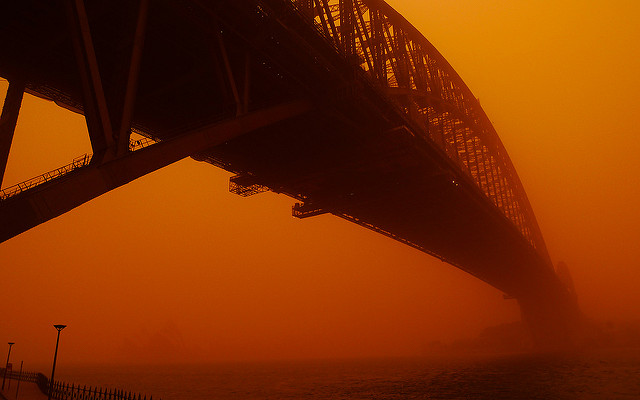
We are entering a new era in the security of Australia, not because of terrorism, the rise of China or even the cybersecurity threat, but because of climate change.
As the world warms 2°C beyond preindustrial levels, as now seems increasingly likely, we will enter an Era of Disasters with profound implications for how we organise ourselves to protect Australian lives, property and economic interests and our way of life. The early warning of this era is arriving almost daily in news reports from across the globe of record-breaking heatwaves, prolonged droughts, massive bushfires, torrential flooding and record-setting storms.
The impact of climate change on natural hazards and their consequences for Australian communities and for our region is the subject of a new ASPI special report, Preparing for the Era of Disasters. In the report, I contend that policymakers and communities are unprepared for the rapid pace and scale at which climate-related hazards are now beginning to appear.
Even without climate change, the impact of natural hazards is enormous. More than 500 Australians, about the same number who died in the Vietnam War, die each year from heat stress alone. The annual economic costs of natural disasters are projected to increase to $39 billion by 2050, which is roughly equivalent to what the Australian government spends annually on defence.
Climate change will dramatically increase the frequency and severity of many of these hazards. The number of record hot days in Australia has doubled in the past 50 years, and heatwaves have become longer and hotter. Extreme fire weather days have increased in recent decades in many regions of Australia. Short and more intense rainstorms that trigger flash floods and urban flooding are also becoming more frequent, and sea levels have been rising at an accelerated rate since 1993.
Australians are already exposed to a broad range of the hazards that climate change is amplifying. Twenty per cent of our GDP and 3.9 million of our people are in areas with high to extreme risk of tropical cyclones, and about 11% of GDP and 2.2 million people are in places with high and extreme risk of bushfire.
As the frequency of extreme events increases, we’ll be likely to see an increase in concurrent extreme events and in events that follow in closer succession. Communities may weather the first few but, in their weakened state, be overwhelmed by those following.
Large parts of the country that are currently marginally viable for agriculture are increasingly likely to be in chronic crisis from the compounding impacts of the steady rise of temperature, drought and bushfires. The scale of those impacts will be unprecedented, and the patterns that the hazards take will change in ways that are difficult to predict.
Australia’s fire season, for example, is already getting longer, and research suggests that tropical cyclones are forming further from the equator as the planet warms, shifting new areas of eastern Australia into the zone of intense storms.
This emerging Era of Disasters will increasingly stretch emergency services, diminish community resilience and escalate economic costs and losses of life. It will also have profound implications for food security in our immediate region, with cascading impacts that will undermine Australia’s national security.
The Australian government and the state and local governments need to begin preparing now for the unprecedented scale of these emerging challenges. A first step should be to create a compelling narrative about climate and disaster risk that explicitly recognises the changing scale of the threat. The narrative should lead to the development of a national strategy for climate change and disaster resilience that codifies the required departure from business as usual. It should bring together the government’s national strategy for disaster resilience with the national climate resilience and adaptation strategy. It makes no sense to treat these two strategies separately when 90% of major disasters are from climate-related hazards such as storms, droughts and floods.
One of the prime objectives of the strategy should be to scale up Australia’s efforts to prevent hazards from becoming disasters. Currently, funding for mitigating disaster risk equates to only about 3% of what the Australian government spends on post-disaster responses. The strategy should also consider action to address simultaneous and consecutive hazards and review options such as financial support to states for economic recovery following disasters and ‘fodder banks’ and ‘land banks’ to address the needs of communities in chronic crisis and the permanently displaced.
Australia should be playing a leading role in advocating globally for urgent climate action, not just because we’re especially vulnerable to the hazards that climate change is amplifying, but also for traditional national security reasons. We’re in a region of many near-neighbour, less developed countries that are highly exposed to the effects of climate change. Climate impacts that affect their food security, economic interests and political stability will rapidly undermine our own security.
No military alliance, deployment of troops or new weapon system will adequately protect Australia from this rapidly escalating threat. The only effective ‘forward defence’ is to reduce greenhouse gases globally, including in Australia, as quickly as possible. Without far greater ambition on this front, even the most concerted efforts to strengthen the resilience of Australian communities will be overwhelmed by the scale of the disasters that lie ahead.

